One of the courses that I’ve most wanted to see in my home state of Michigan for awhile now has been Barton Hills in Ann Arbor. While the course has never been too bright a star on lists of the best courses in the state, it’s a Donald Ross course that was restored a few years back by Ron Pritchard. And the pictures that I had seen of the course post-restoration, while not numerous, made it seem very appealing. I’ll always bet on a few pictures of a course over its position (or not) on course rankings as an indicator of whether I’ll like the course.
And it worked here too; the course is every bit as good as what I hoped it might be from the pictures and severely underrated on lists of the best courses in Michigan. It’s easily one of the top 10 and might even make the cut for the top 5. While the course has its share of excellent holes—especially the par 3s—what stands out to me are the green complexes. They aren’t one of the most severe sets in the state, but are full of interesting small contours. Even better is how well they meld with their surroundings. To me, the detail at the edges of the greens is almost ideal. Some spots blend into the surrounding contour, some are built up.
And this combination has great effect on how you should play shots into these greens. Barton Hills has some of the best ‘tucked’ pin positions I’ve seen on any course, where you take on a lot of risk playing to them because of the severe slopes at the nearby edges, but it’s always possible to play to a safe area. While they don’t share the extensive short grass areas around the greens, these greens remind me of Pinehurst no.2 in the sense that there’s always a seriously bad miss but it isn’t too hard to play safe and leave yourself something more manageable.
The bunkering is also some of the best in the state and while the land on the front nine is modest, it’s always very pleasant. Then the Ann Arbor hilliness kicks in on the back nine, which lends some variety to the course. I would say that the course comes up a bit short on the longer par 4s and 5s which sometimes lack a bit of interest, but there’s no doubt to me that this is one of the best courses in the state and perhaps its most underrated.
The first hole, a ~425 yard par 4 is actually a bit of an un-Donald Ross start in that it’s a pretty tough par 4. But it’s also one of the best on the course; there’s real advantage to keeping close to the bunkers up the left side because the hole turns left and it’ll be quite a long approach if you bail out right. But if you do, the green is one of the more open in front and you can run a ball on.
And it worked here too; the course is every bit as good as what I hoped it might be from the pictures and severely underrated on lists of the best courses in Michigan. It’s easily one of the top 10 and might even make the cut for the top 5. While the course has its share of excellent holes—especially the par 3s—what stands out to me are the green complexes. They aren’t one of the most severe sets in the state, but are full of interesting small contours. Even better is how well they meld with their surroundings. To me, the detail at the edges of the greens is almost ideal. Some spots blend into the surrounding contour, some are built up.
And this combination has great effect on how you should play shots into these greens. Barton Hills has some of the best ‘tucked’ pin positions I’ve seen on any course, where you take on a lot of risk playing to them because of the severe slopes at the nearby edges, but it’s always possible to play to a safe area. While they don’t share the extensive short grass areas around the greens, these greens remind me of Pinehurst no.2 in the sense that there’s always a seriously bad miss but it isn’t too hard to play safe and leave yourself something more manageable.
The bunkering is also some of the best in the state and while the land on the front nine is modest, it’s always very pleasant. Then the Ann Arbor hilliness kicks in on the back nine, which lends some variety to the course. I would say that the course comes up a bit short on the longer par 4s and 5s which sometimes lack a bit of interest, but there’s no doubt to me that this is one of the best courses in the state and perhaps its most underrated.
The first hole, a ~425 yard par 4 is actually a bit of an un-Donald Ross start in that it’s a pretty tough par 4. But it’s also one of the best on the course; there’s real advantage to keeping close to the bunkers up the left side because the hole turns left and it’ll be quite a long approach if you bail out right. But if you do, the green is one of the more open in front and you can run a ball on.
This is one of several greens with a very interesting—and difficult—tucked pin. Check out the front-right pin! Still, it’s always possible to play to the middle of the green and that leaves an uphill putt of the greenskeeper has been unfavorable to you on this day.
The 525 yard second hole shouldn’t be too tough of a hole. While you can’t see the landing area very well, it’s wide-open until a bunker on the right at about 290. But there’s nice subtlety to this hole; it gently turns right and while going up the right side shortens the shot to the green, it also makes the angle more awkward for the layup. This is especially true if you layup short of the bunkers ~75 yards short of the green because the ground there slopes left. The green is also more open from the left side.
While it’s awkward, I liked the sharp dogleg left long par 4 3rd. This is a very difficult hole—about 475 even from the second-to-back tees. And you either need to really cut the tree line close or hit a big draw. It’s easy to leave yourself too long an approach to reach the green. But even if you hit a long drive, it’s still much better to be in the left side of the fairway because the green is tightly bunkered on the right and there’s plenty of room to run one in on the left.
Four is the first short par 4 and I think that most days, it’s a pretty simple hole. The fairway is wide short of 250 and the green is both pretty big and not too heavily contoured.
There’s one exception to this—when the pin is back-right, which it was on this day. This is an extremely dangerous pin to play at, with deep bunkers just short-right and another long. But as we saw at the first and will see several more times, you can reduce the risk by playing just a little bit away from the pin. 15-20 ft. left should be sufficient…which someone in my group got just right!
There’s one exception to this—when the pin is back-right, which it was on this day. This is an extremely dangerous pin to play at, with deep bunkers just short-right and another long. But as we saw at the first and will see several more times, you can reduce the risk by playing just a little bit away from the pin. 15-20 ft. left should be sufficient…which someone in my group got just right!
Our first par 3, the ~170 yard fifth fits the theme. The front of the green is pretty wide, although pitched at a bit of an angle to the tee so it doesn’t quite look it. But the back gets very narrow between deep bunkers and I would advise to play well short of these pins, never past the middle of the green. I tried but failed to follow my own advice, ending up in a bunker pin-high right and was lucky to leave with a 4.
I suspect that the most-criticized hole at Barton Hills is the short par 4 sixth. The drive is mostly blind between bunkers but unlike the second, the blindness here obscures a pond that cuts into the middle of the hole at about 270. Although I’m not a fan of the trend, this is one hole that’d be better if the moved the tees up to where you could drive the green because otherwise, you should never play it any other way but iron—short-iron.
While the rest of the hole is nothing special, the large green on the mid-length par 4 seventh is a beauty. It’s big and indescribably rolling. All of the edge pins here are tough because all parts of the green slope off in the front and there’s also a pretty good drop-off at the back. As usual, you can play to the middle of the green without too much trouble but on this hole especially if the pin is near an edge, it’ll leave you a tough two-putt.
The eighth is the second of Barton Hills’ four excellent par 3s. One of the great things about these par 3s—which is characteristic of most great sets of par 3s—is how much they differ from each other. This one, which can play up to around 220, is very different from five. There’s plenty of room to run the ball onto the green (as you’d want on a long par 3) and the green is very receptive, build into a natural rise. This creates a nice backstop if you run one in a bit too hot but because the green also slopes to the right, you feed your ball right to the tucked back-right pin with a bit of a draw.
The next two holes are par 5s, long and short (560 and 460) respectively. Neither is a particularly strong hole but you need to be very careful on ten as there’s another blind pond that cuts in on the left about 50 yards short of the green. I found it to be a blessing in disguise here that I hit a bad drive and had to lay up because it’s not a green I’d want to go at from any kind of distance.
Eleven is another long par 3 playing up to 240 and like eight, you can run the ball onto the green. Unlike eight, the green gives you no assistance here because it’s gently built up on a pad an runs away at the back. It’s best to hedge short and left here. The length may be similar to eight, but it’s a very different hole.
Twelve is another short par 4 with a pond but unlike the two previous pond holes, this is a very good one. In fact, this might be the best driving hole on the course. At only about 300 to the front of the green even from the back tee block, long hitters could try driving this green. But it’s a good 250 carry over the pond on the direct line and it gets tight, with deep bunkers around the deep, shallow green.
It’s also a good driving hole for the rest of us because you can either cut off some of the pond to shorten the approach or play to the right and avoid it altogether. If you do this, you must be careful not to go too far because bunkers angle in through the fairway and they’re close enough that it’s easy to reach them with any kind of push (they start at ~210 out).
It’s also a good driving hole for the rest of us because you can either cut off some of the pond to shorten the approach or play to the right and avoid it altogether. If you do this, you must be careful not to go too far because bunkers angle in through the fairway and they’re close enough that it’s easy to reach them with any kind of push (they start at ~210 out).
The rest of the back nine is mostly a procession of back-and-forth par 4s that are pretty straight-forward off the tee but have very interesting and diverse greens. Both thirteen and eighteen have large bunkers at the start of the fairway that obscure more directly threaten bunkers further up. But this hole nearly as interesting off the tee as at the green, which has a bit of a false front and funnels in at its left and right.
Like thirteen, fourteen has a fairway bunker left that long hitters (so not me) should easily clear. While the thirteenth green was concave, this one is convex, sloping off at its edges into bunkers. There’s a classic Barton Hills pin placement at the back-right of the green. You really don’t want to miss if you go at this one.
The terrain is much hillier for the next two holes. I’m not a big fan of the fifteenth, which is blind off the tee, downhill and over a bunker. The fairway is wide—but don’t miss right. The approach is probably 25 feet uphill, so it’s a tough one.
As is the ~200 yard par 3 sixteenth, which probably has the course’s most severe green. While you must be below the pin here, you also must be careful not to be too far below the pin because the green has a pretty good false front.
Seventeen is the longest par 4 on the back nine, stretching to about 480 at the tips. It’s also the best driving hole (other than maybe the twelfth), with a bunker cutting into the left side just about where you’d want to land the ball if playing from the correct set of tees. There’s also a rise in the fairway at the bunker, so you need a pretty good drive to get to a point where you have a good view of the green. And with a tree line and out-of-bounds, there’s no bail out right.
The green is another good one but it’s elevated above its surroundings and tough to hit. Apparently this hole used to be a par 5 and the green might make a bit more sense in that context. But there’s room to bail out short of the green and because of that, I didn’t mind the difficulty.
The final drive is a tough on because like thirteen, the fairway is blind and a bunker cuts in on the left side right where you’d want to drive it. There are several bunkers short and right on the approach, but there’s plenty of room to run the ball onto this large green.
There have been a lot of restorations and renovations of classic courses over the past decade. While I’ve only seen a few of these and I never saw Barton Hills before the renovations, I have to imagine that this was one of the better ones. The detail on an around the greens is as good as I’ve seen anywhere, although I would say that overall, these greens aren’t as difficult as on some of the famous classic courses or on some of the new, neo-golden-age courses.
And I think that this latter point is a real strength for Barton Hills. There’s plenty of interest in the greens throughout, but they’re never severe…unless you miss in a place where you shouldn’t. Over and over again, I see new courses where several of the greens have too many areas around them that are too severe. The worst example of this is Greywalls in the UP, where there are several greens where unless you hit some sliver of land, there’s a good chance that you’ll go back-and-forth across the green on your next few shots. And it isn’t the only example. I don’t mind greens with some severe edges, but this has to be a limited percentage of the overall edges of the green. There must be some realistic bail out space.
That’s the lesson that Pinehurst no.2 teaches so well and Barton Hills exemplifies it better than almost any other course that I’ve played. There is severity here, but unless you’re too aggressive or careless, you’ll probably won’t encounter it. There’s a way for a weaker player to play every hole. But set the pins in some of their tougher spots and this course will be plenty challenging for almost anyone.
I think my main criticism of Barton Hills is that there could be more variety off the tee. There are plenty of fairway bunkers and some tough driving holes, but they’re usually off to the side of the fairway and there’s never too much thinking as long as you hit it straight. It’s still a good course off the tee, but that’s probably enough to keep Barton Hills below the All-American tier of courses (the greens are certainly good enough). Still, Michigan probably has at most 3 or 4 All-American courses and if this one falls just short of that, that’s still pretty good.
And I think that this latter point is a real strength for Barton Hills. There’s plenty of interest in the greens throughout, but they’re never severe…unless you miss in a place where you shouldn’t. Over and over again, I see new courses where several of the greens have too many areas around them that are too severe. The worst example of this is Greywalls in the UP, where there are several greens where unless you hit some sliver of land, there’s a good chance that you’ll go back-and-forth across the green on your next few shots. And it isn’t the only example. I don’t mind greens with some severe edges, but this has to be a limited percentage of the overall edges of the green. There must be some realistic bail out space.
That’s the lesson that Pinehurst no.2 teaches so well and Barton Hills exemplifies it better than almost any other course that I’ve played. There is severity here, but unless you’re too aggressive or careless, you’ll probably won’t encounter it. There’s a way for a weaker player to play every hole. But set the pins in some of their tougher spots and this course will be plenty challenging for almost anyone.
I think my main criticism of Barton Hills is that there could be more variety off the tee. There are plenty of fairway bunkers and some tough driving holes, but they’re usually off to the side of the fairway and there’s never too much thinking as long as you hit it straight. It’s still a good course off the tee, but that’s probably enough to keep Barton Hills below the All-American tier of courses (the greens are certainly good enough). Still, Michigan probably has at most 3 or 4 All-American courses and if this one falls just short of that, that’s still pretty good.
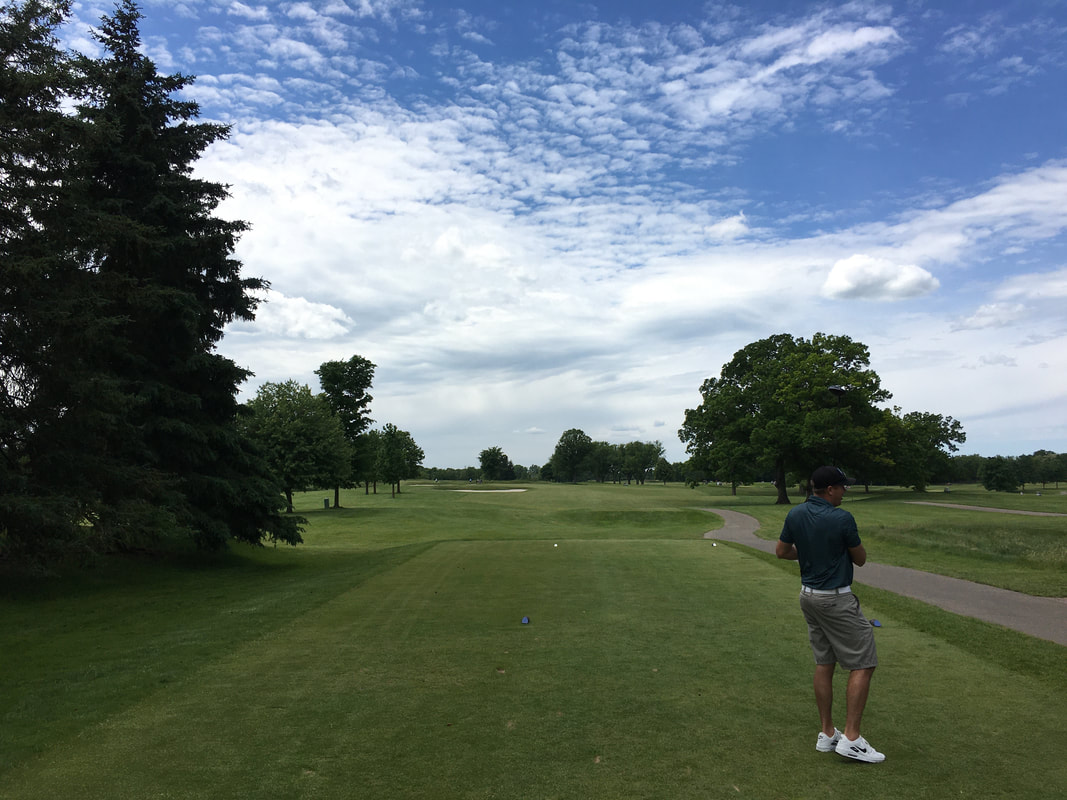
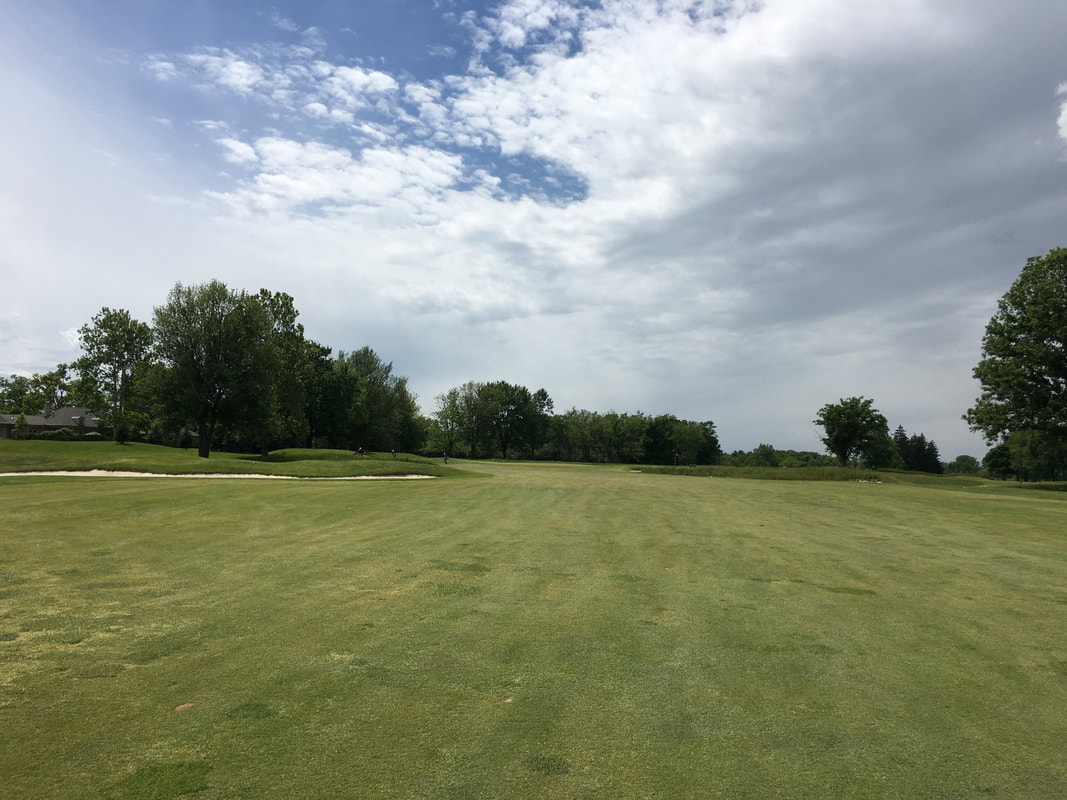
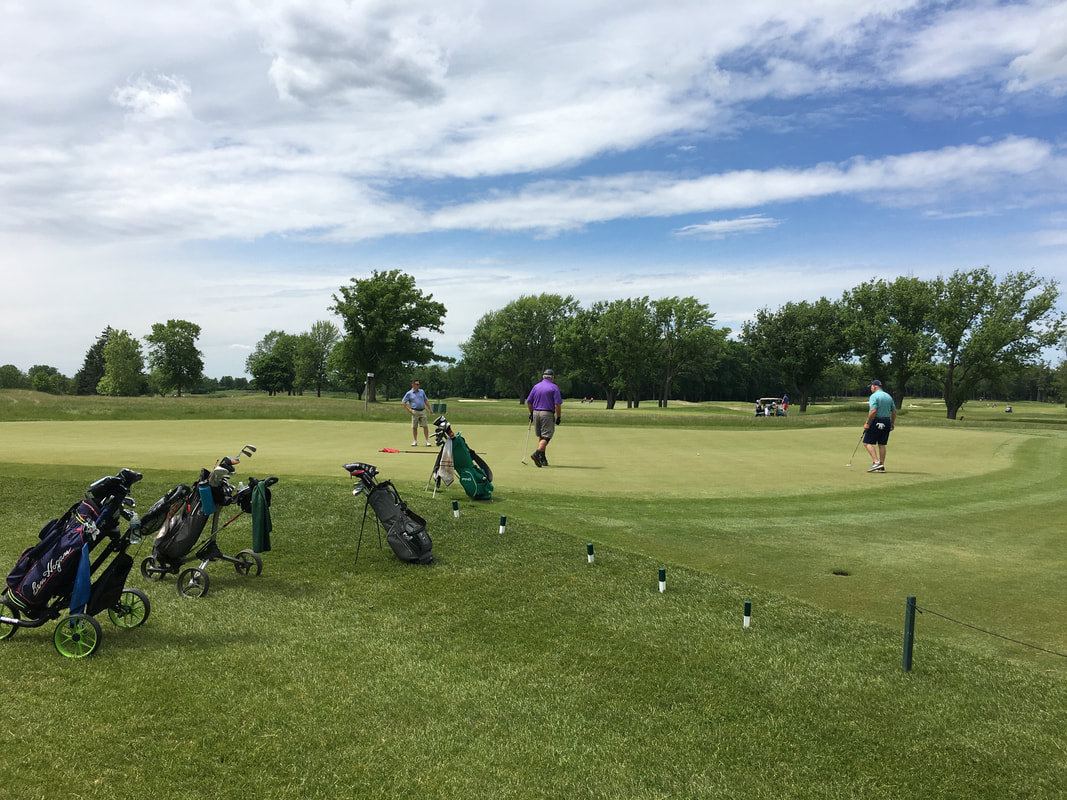
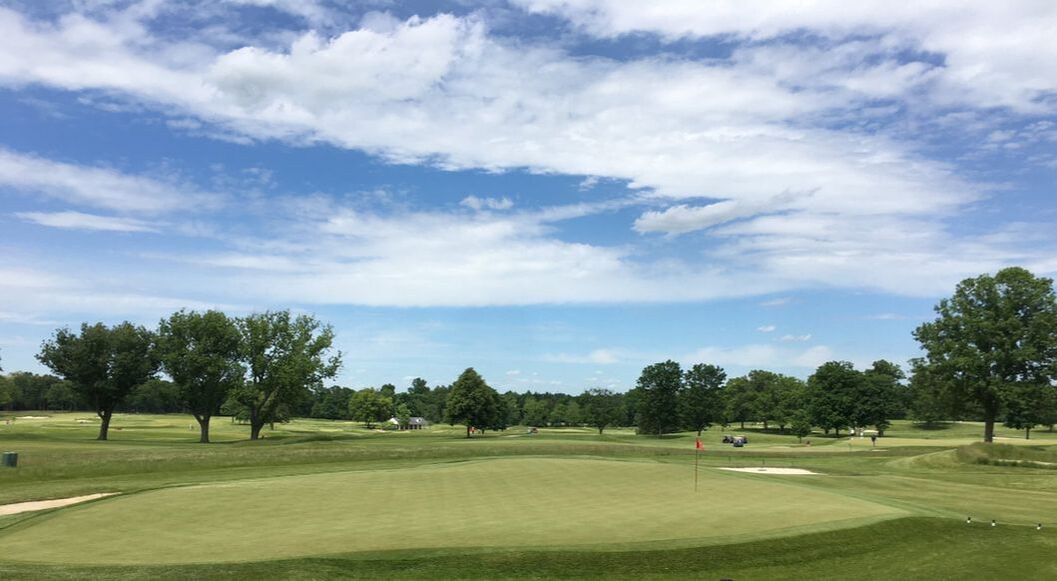
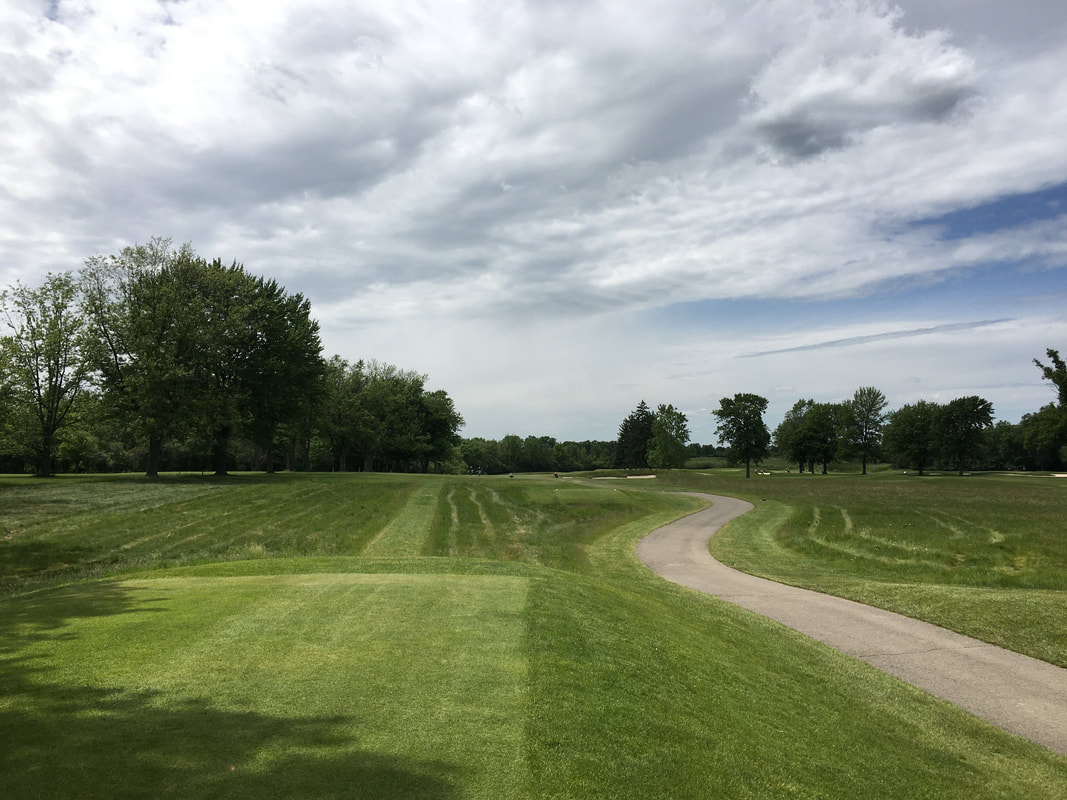
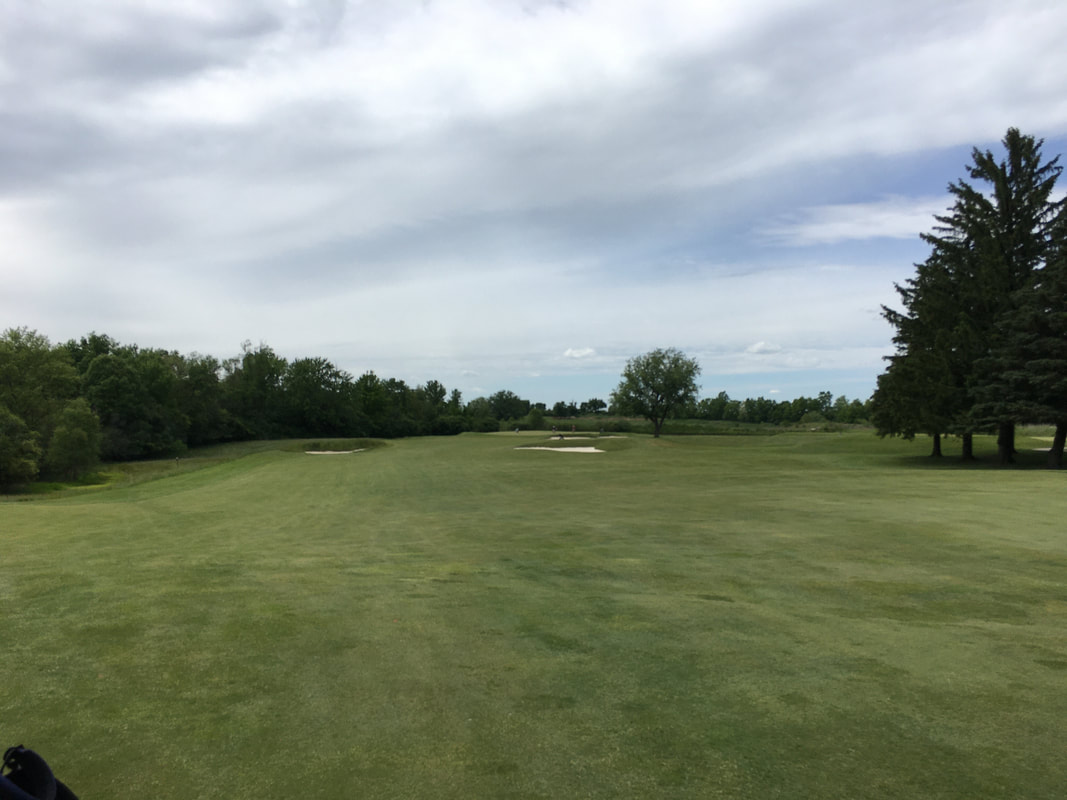
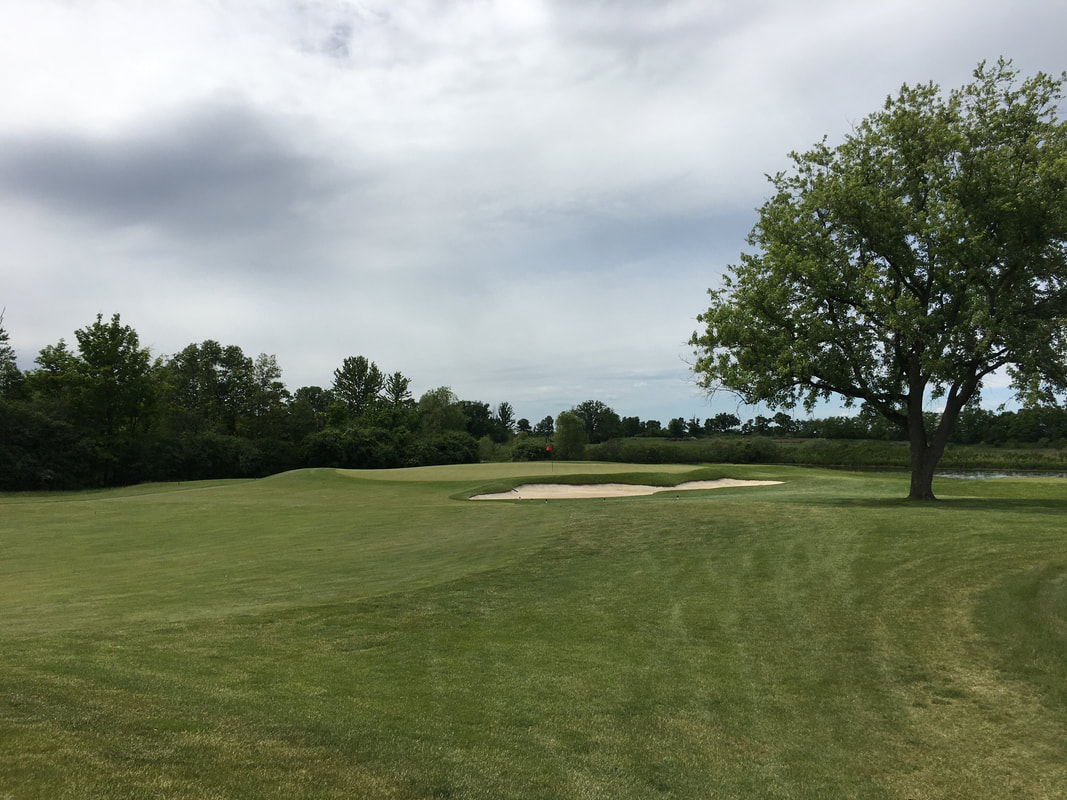
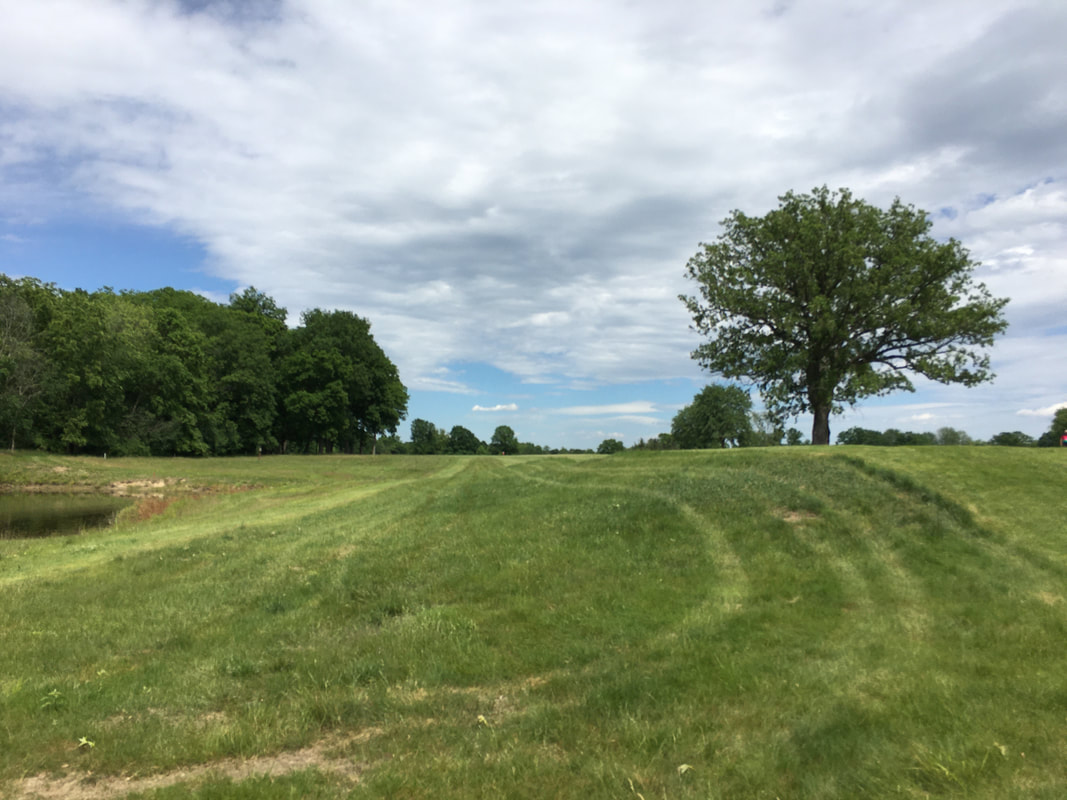
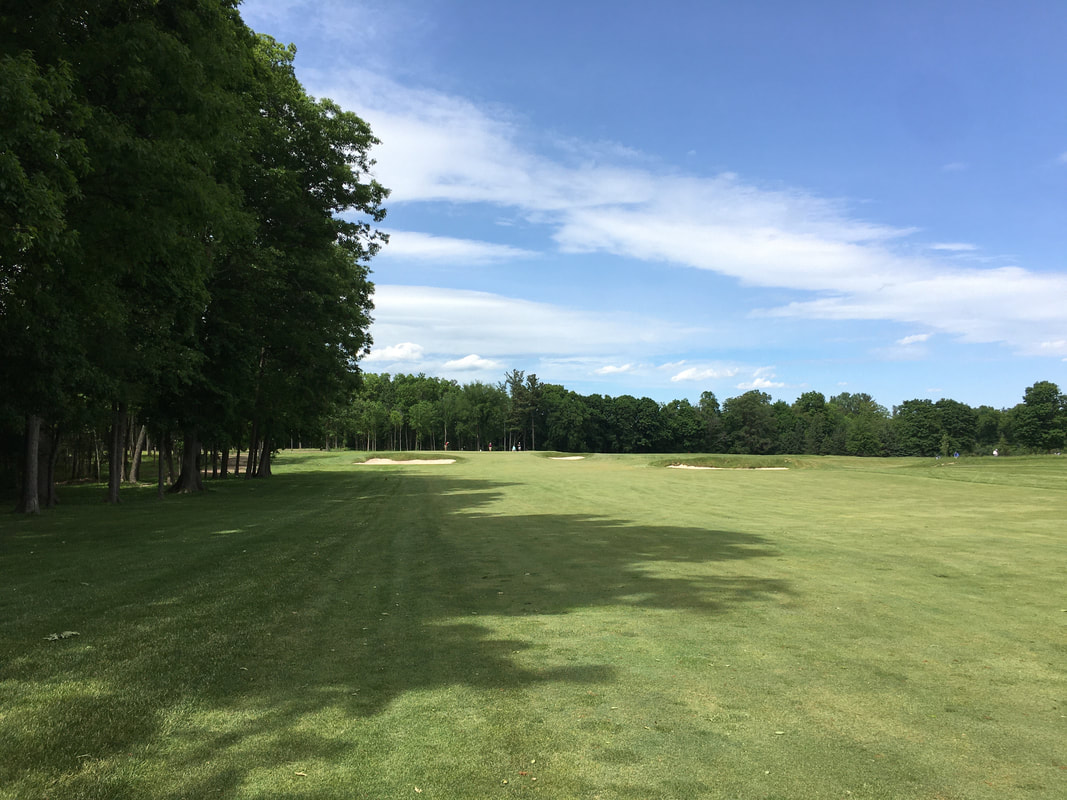
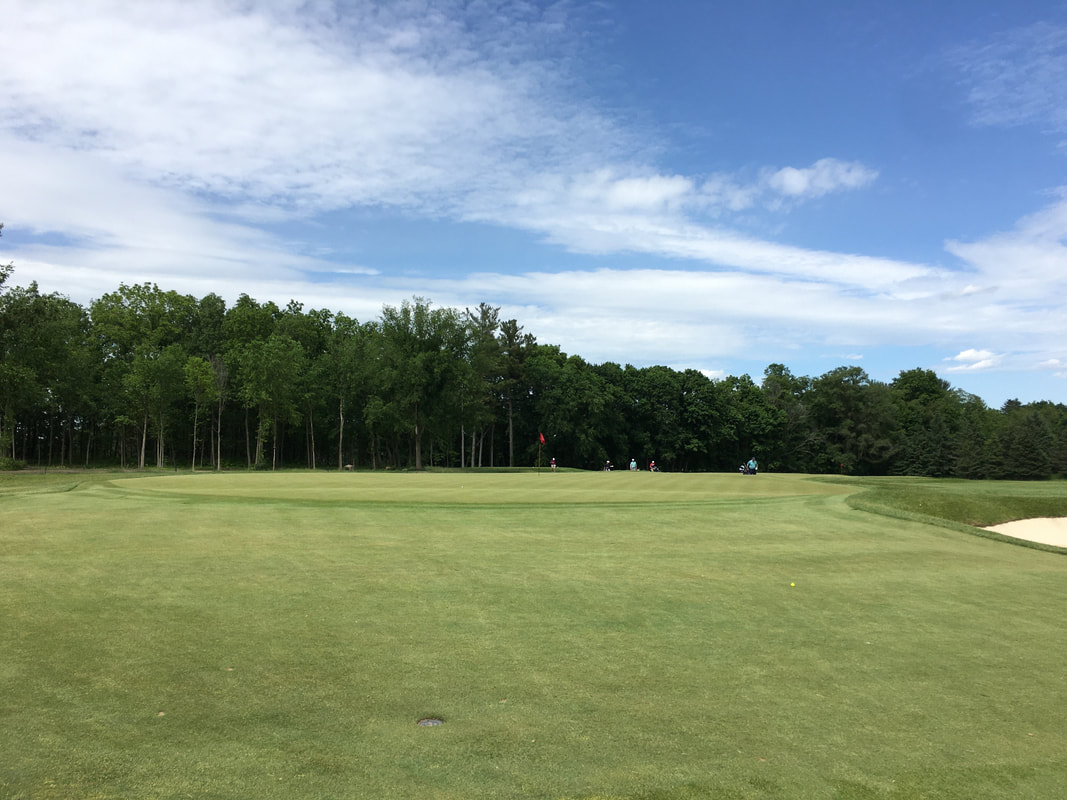

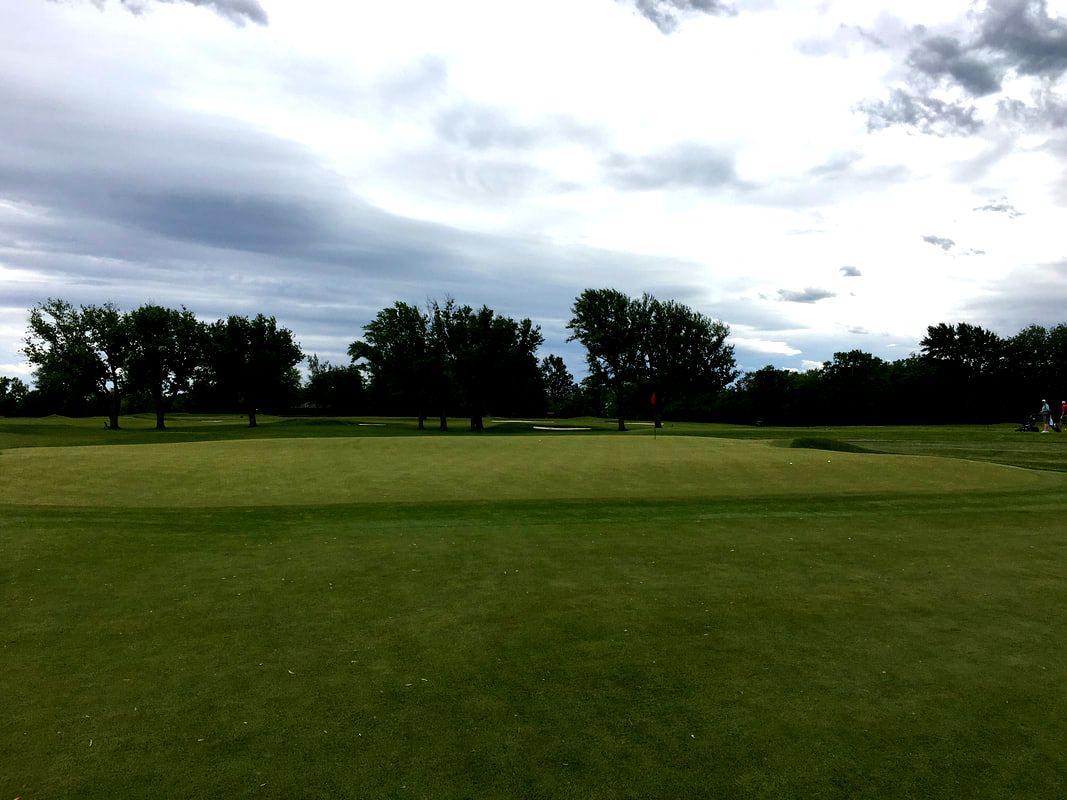
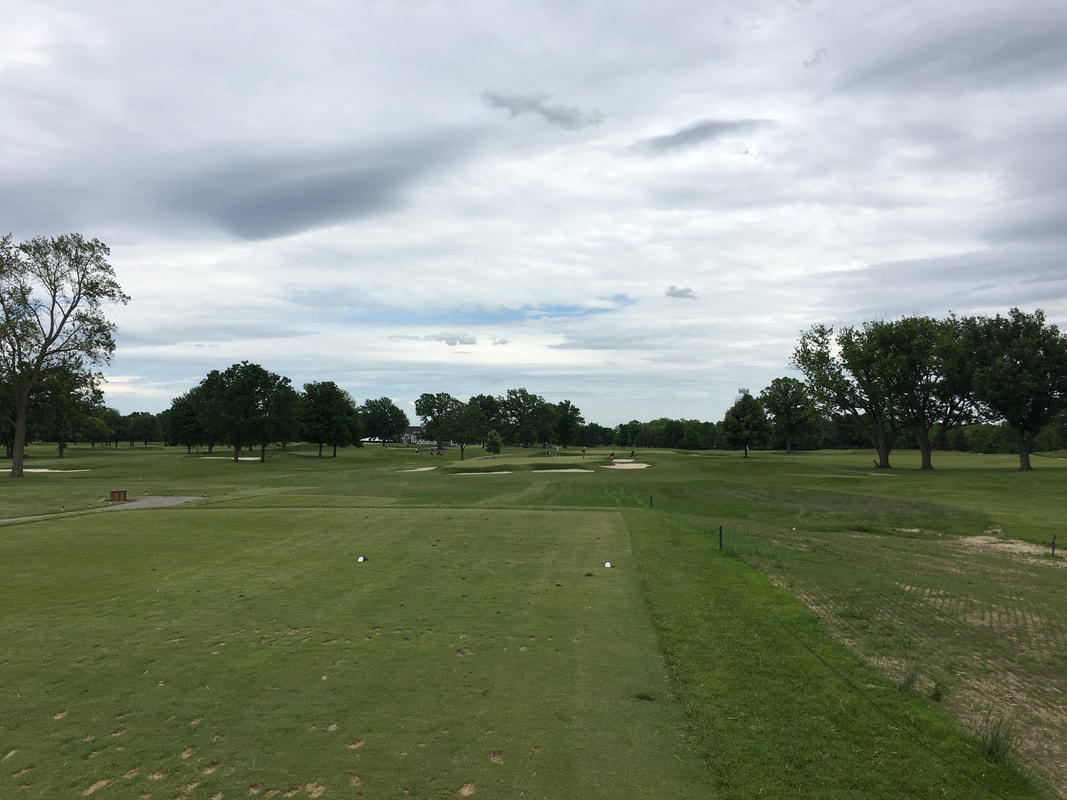
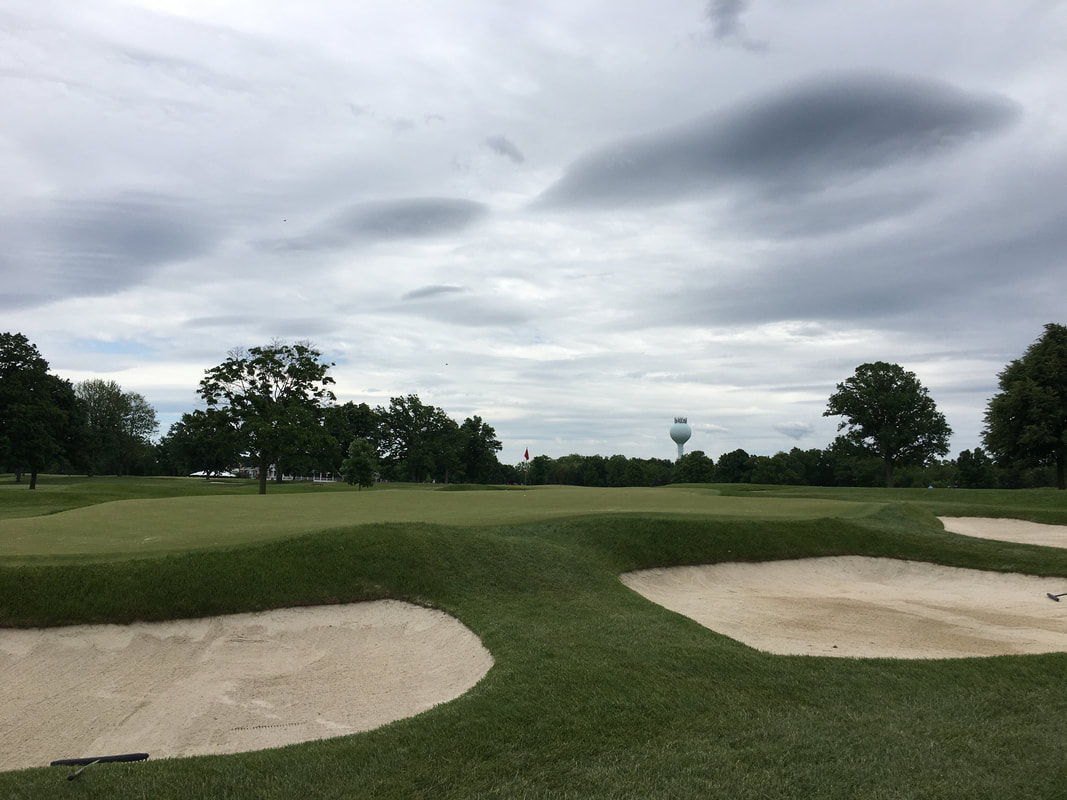
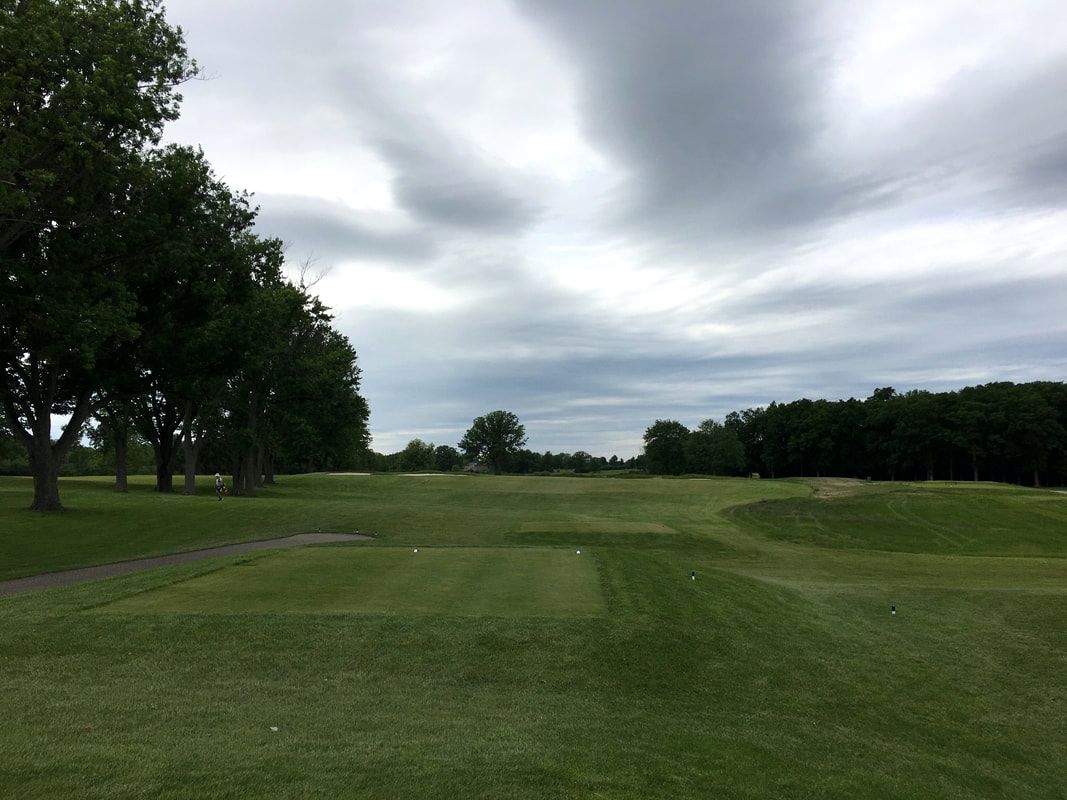
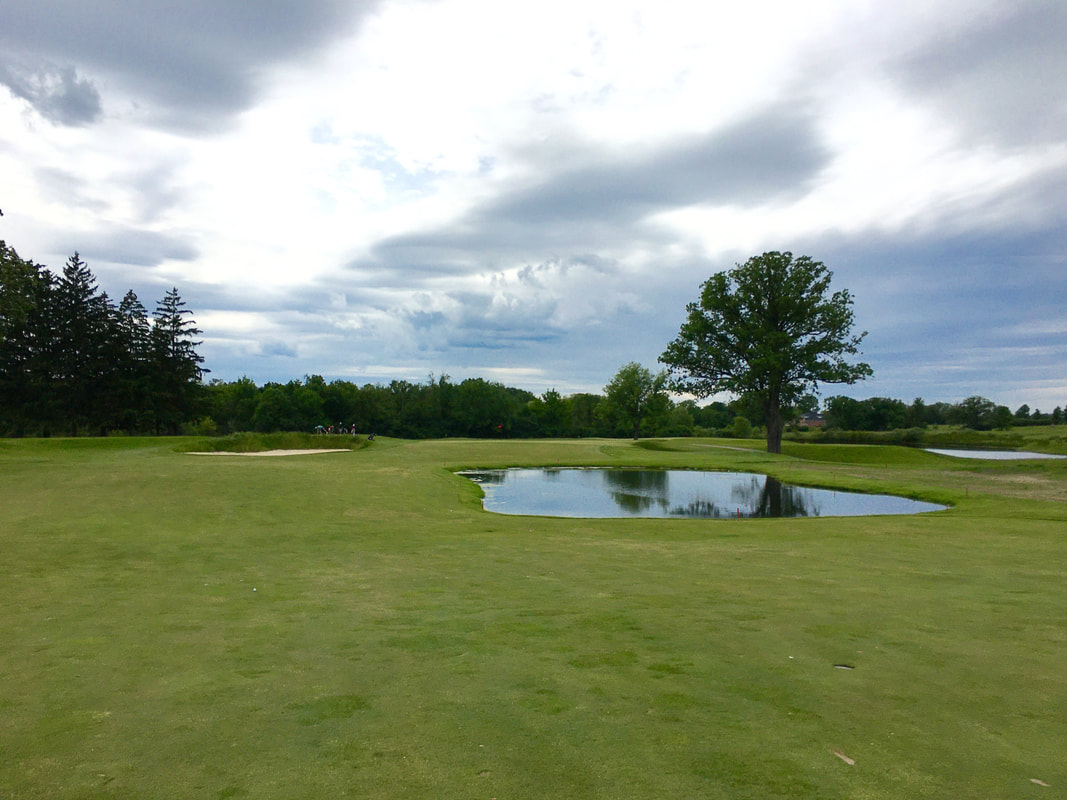
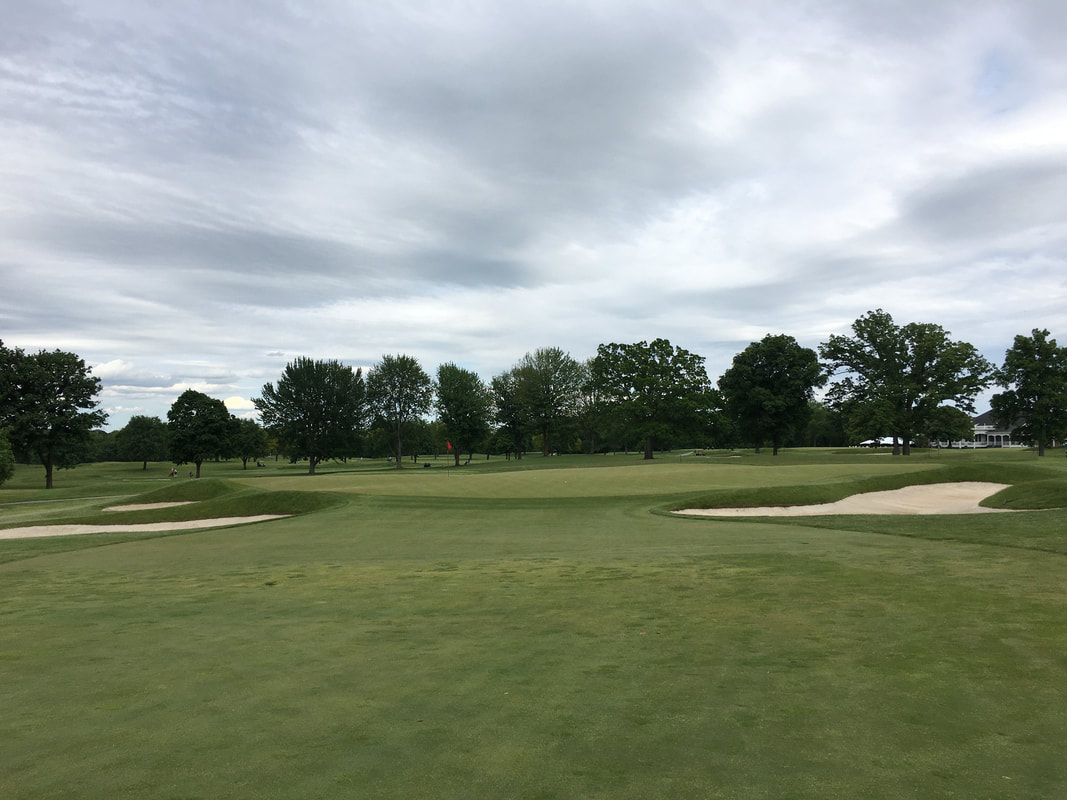
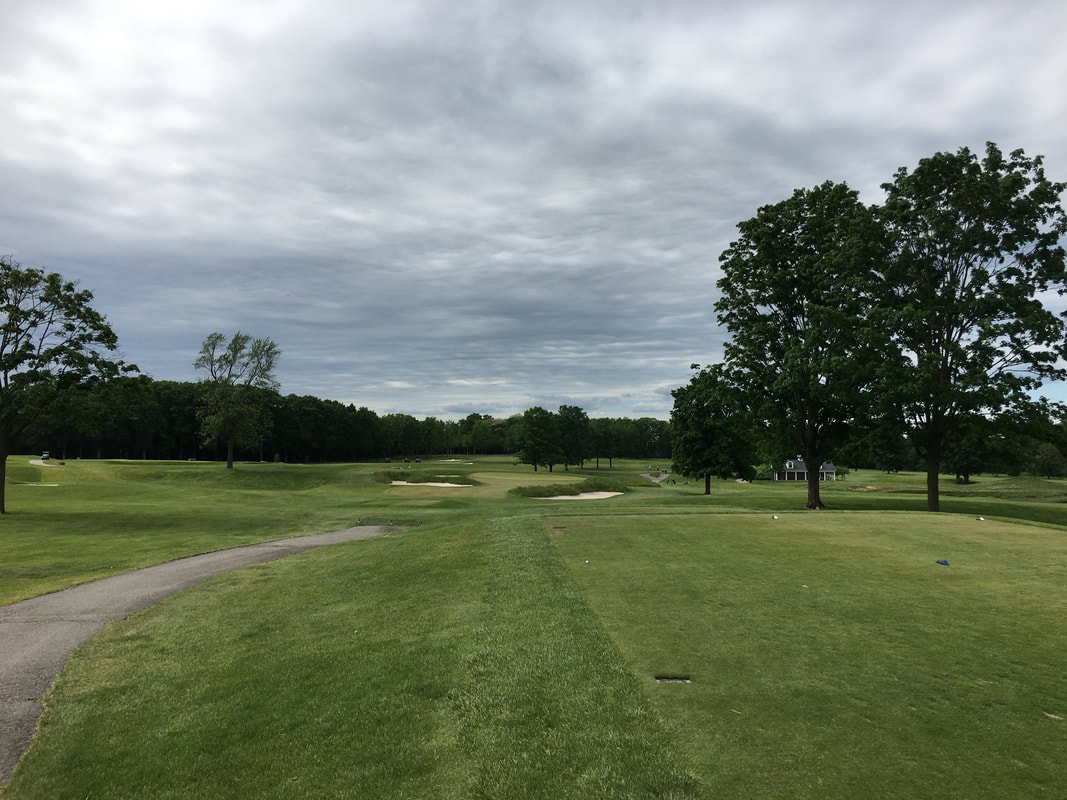
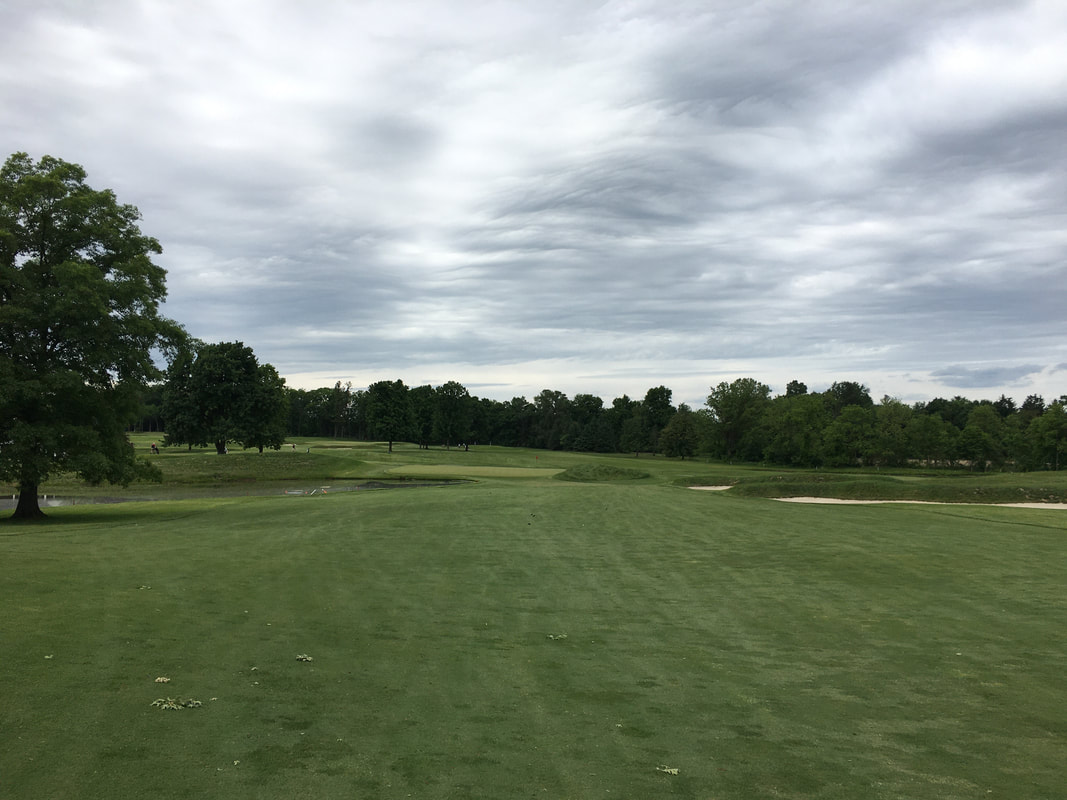
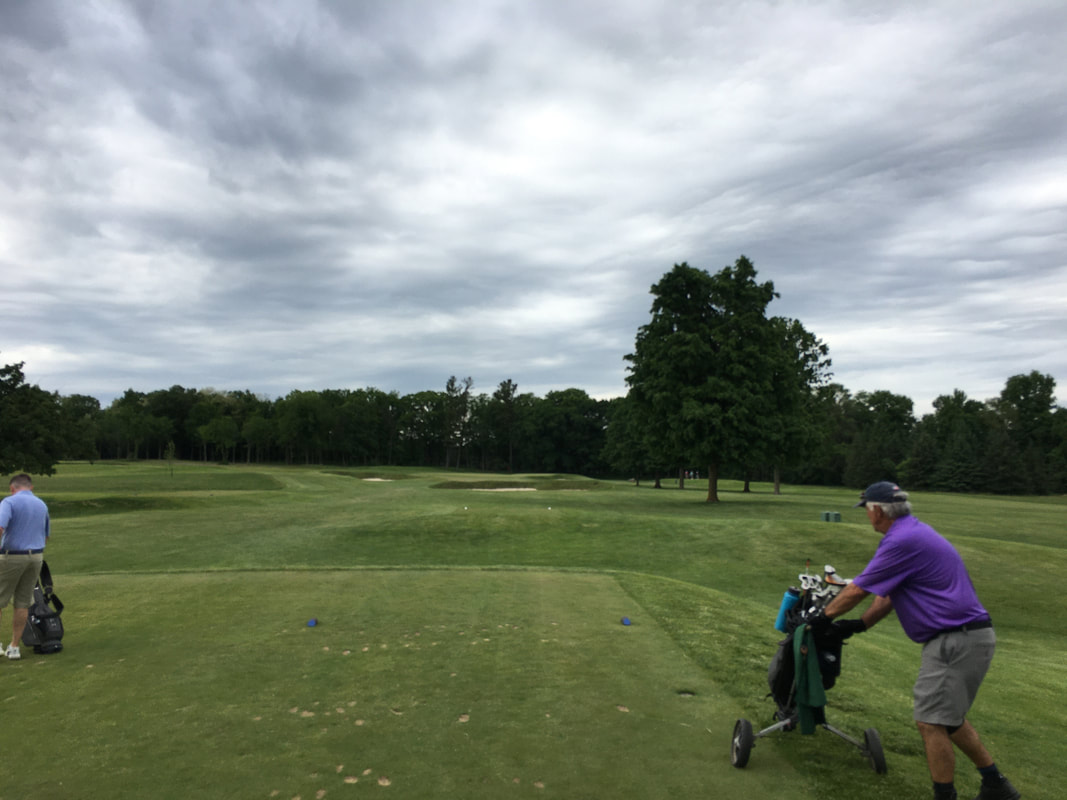
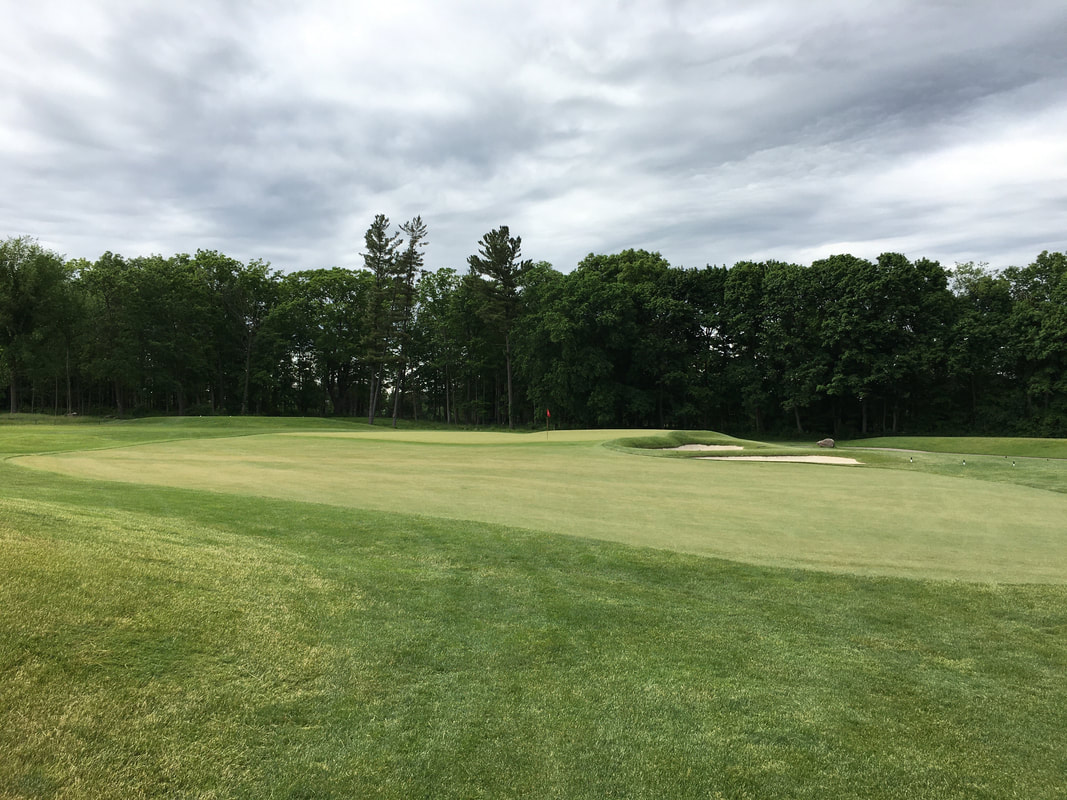
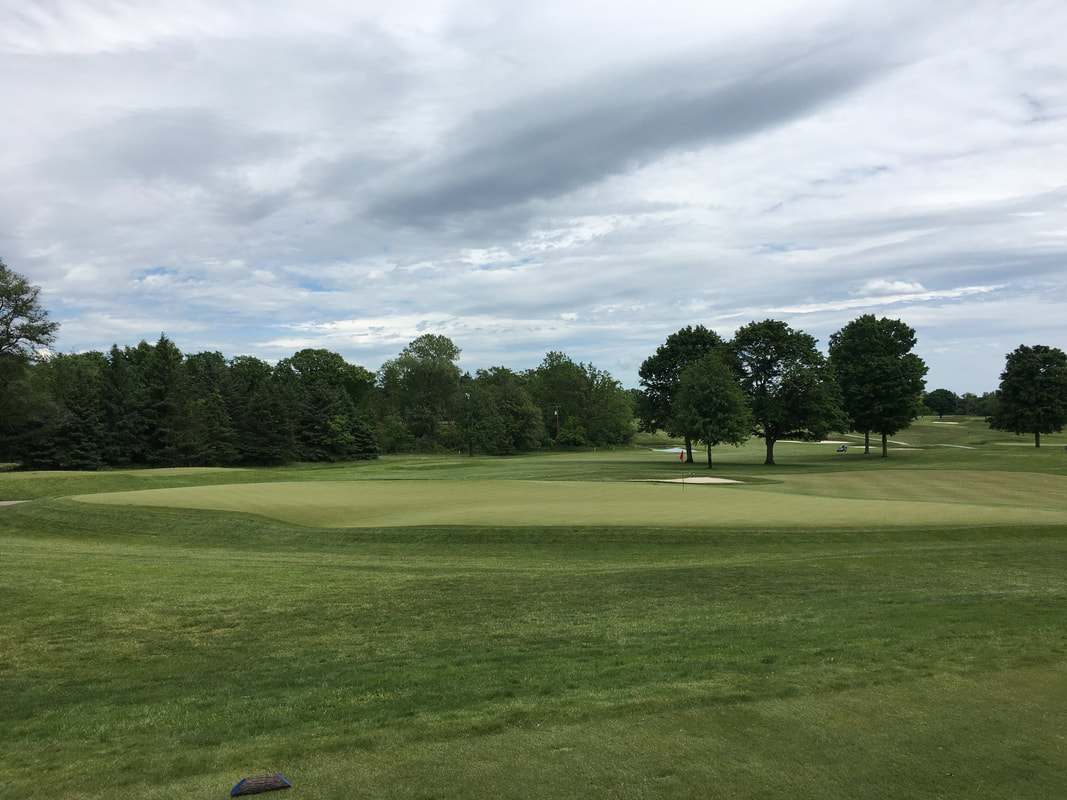

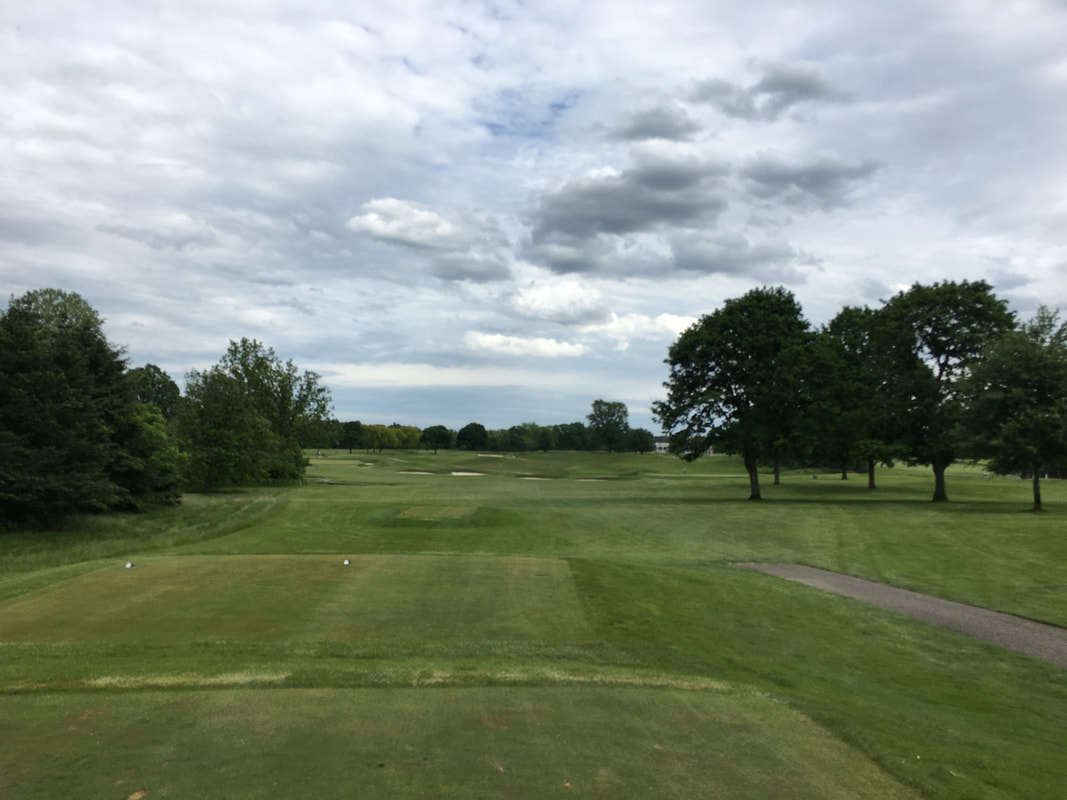
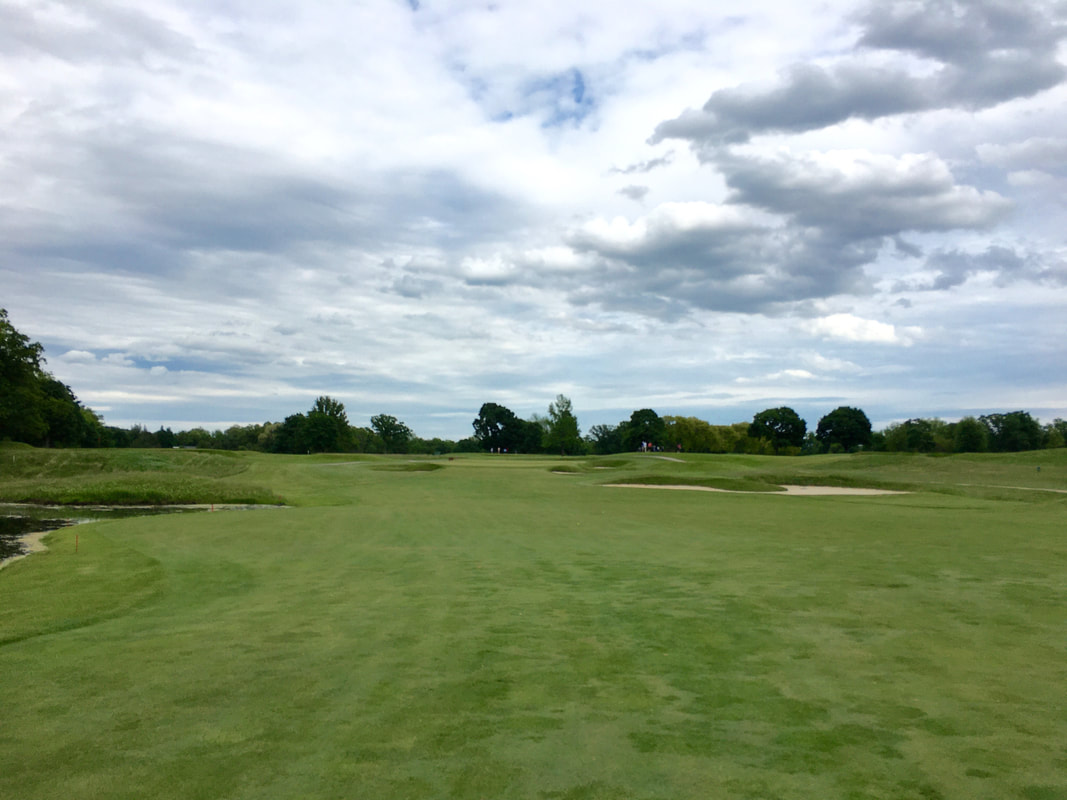
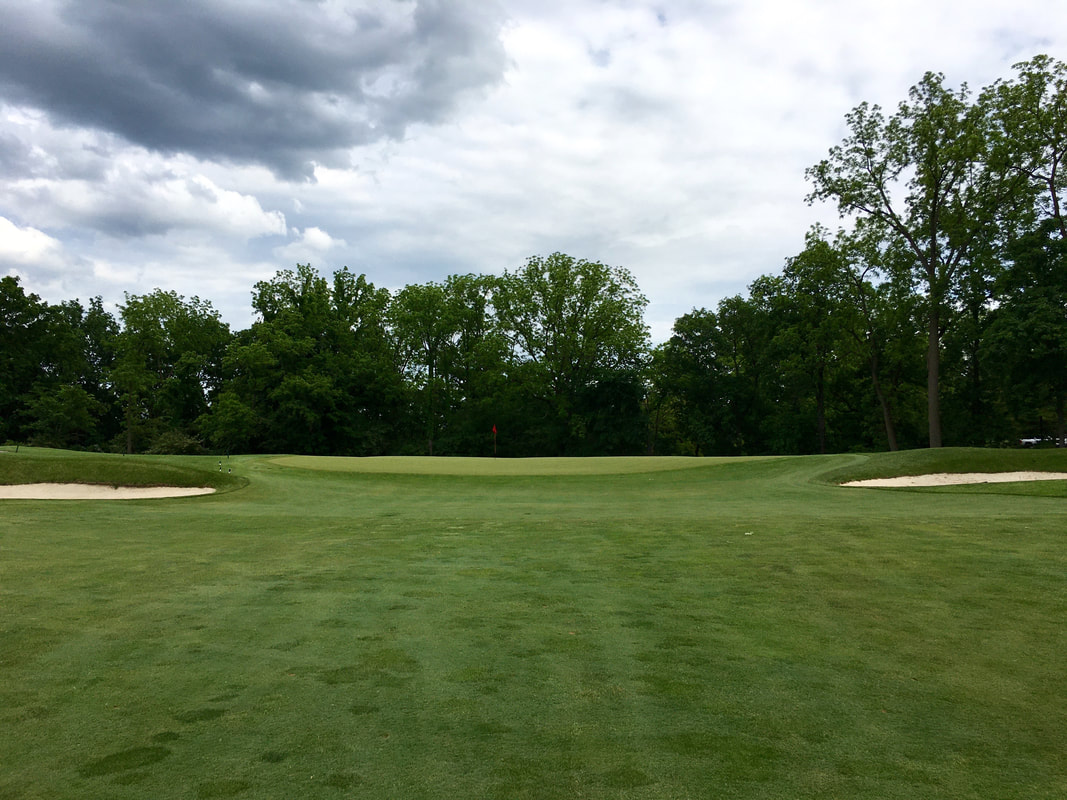
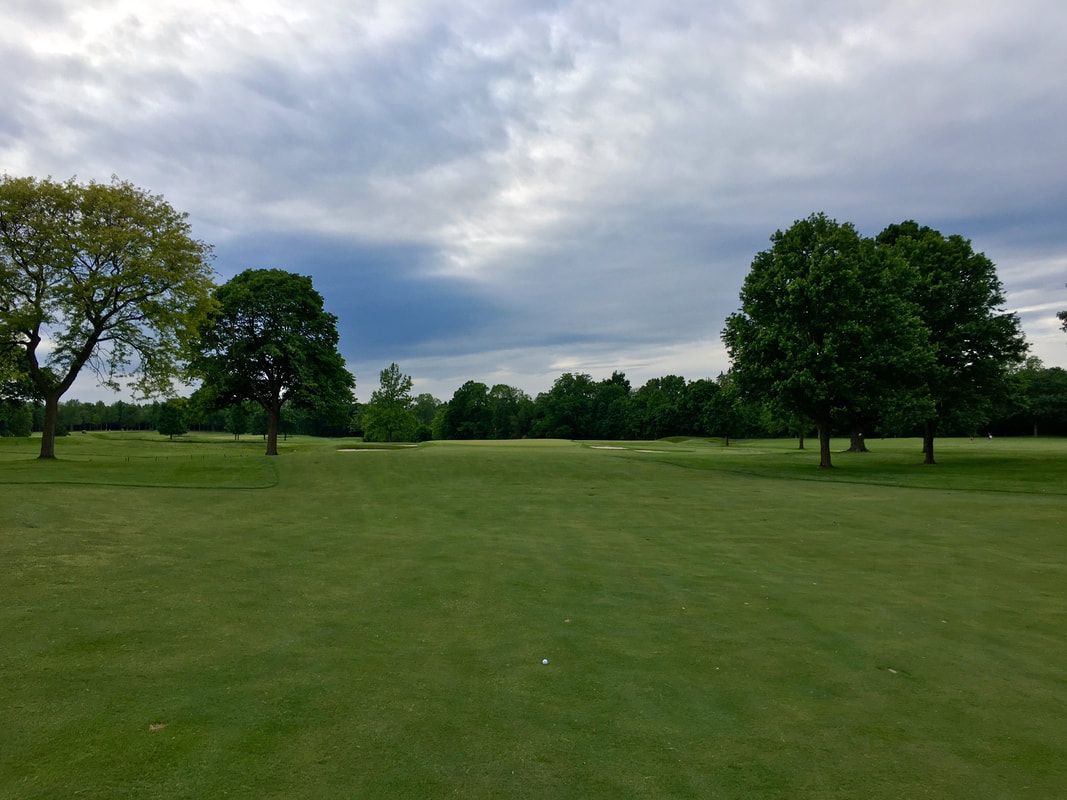
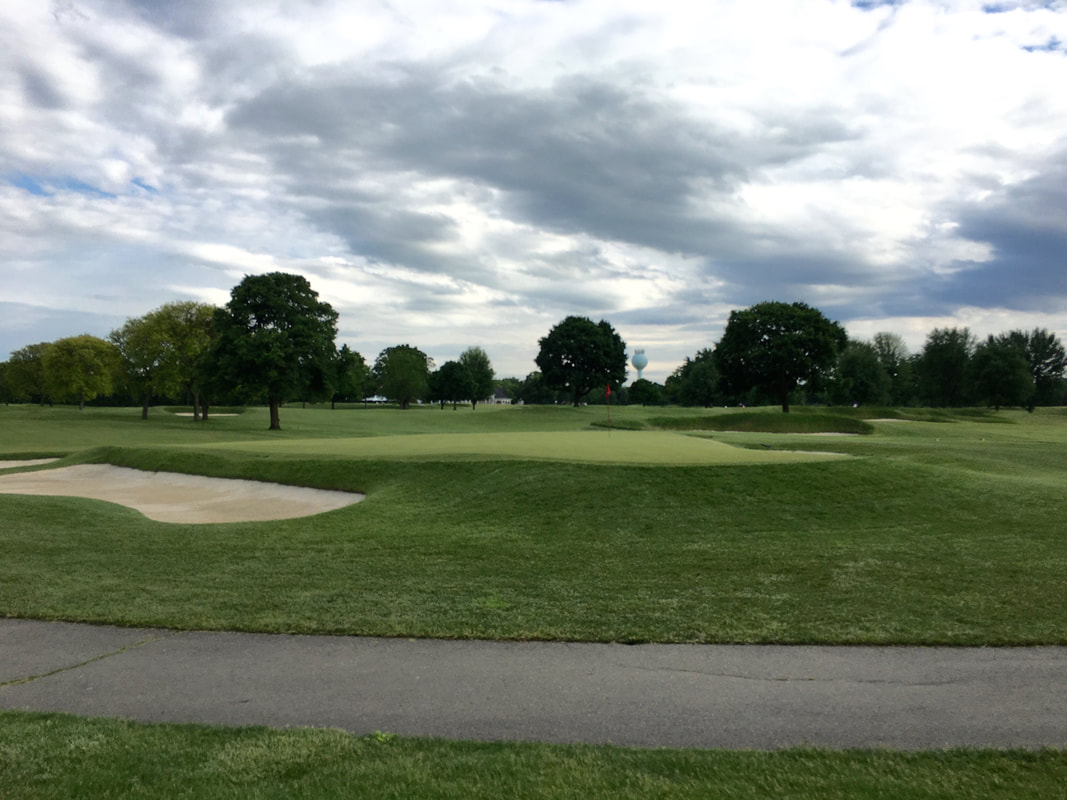
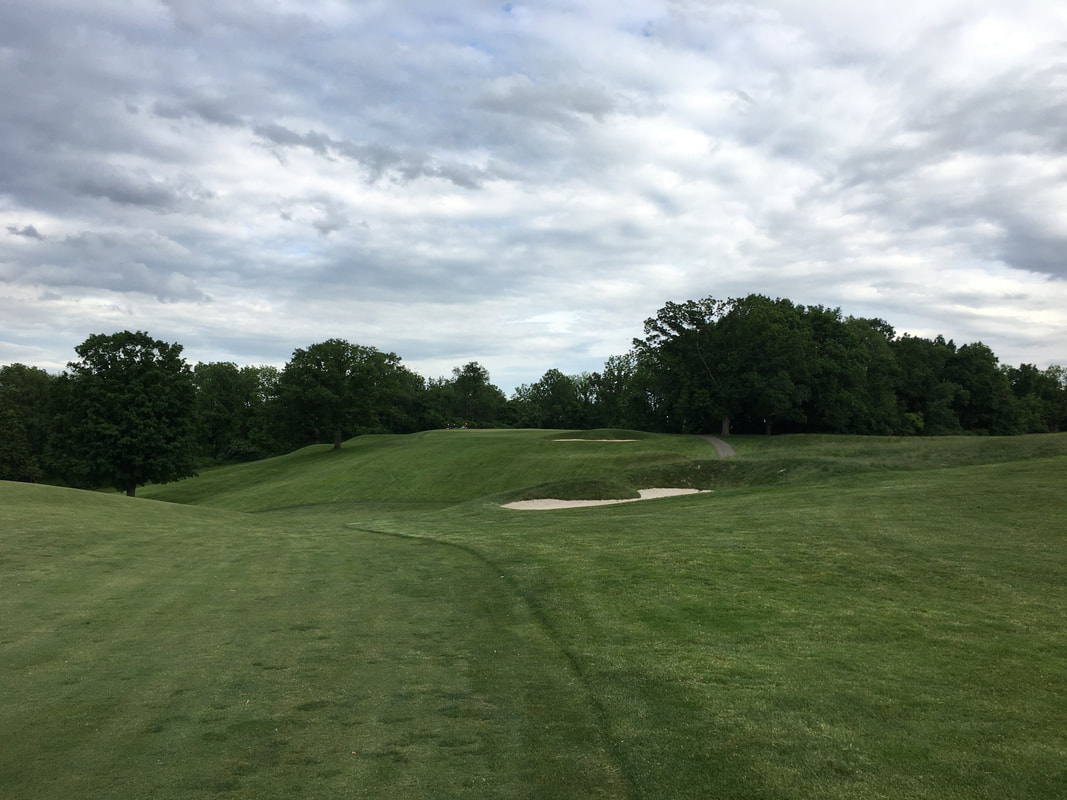
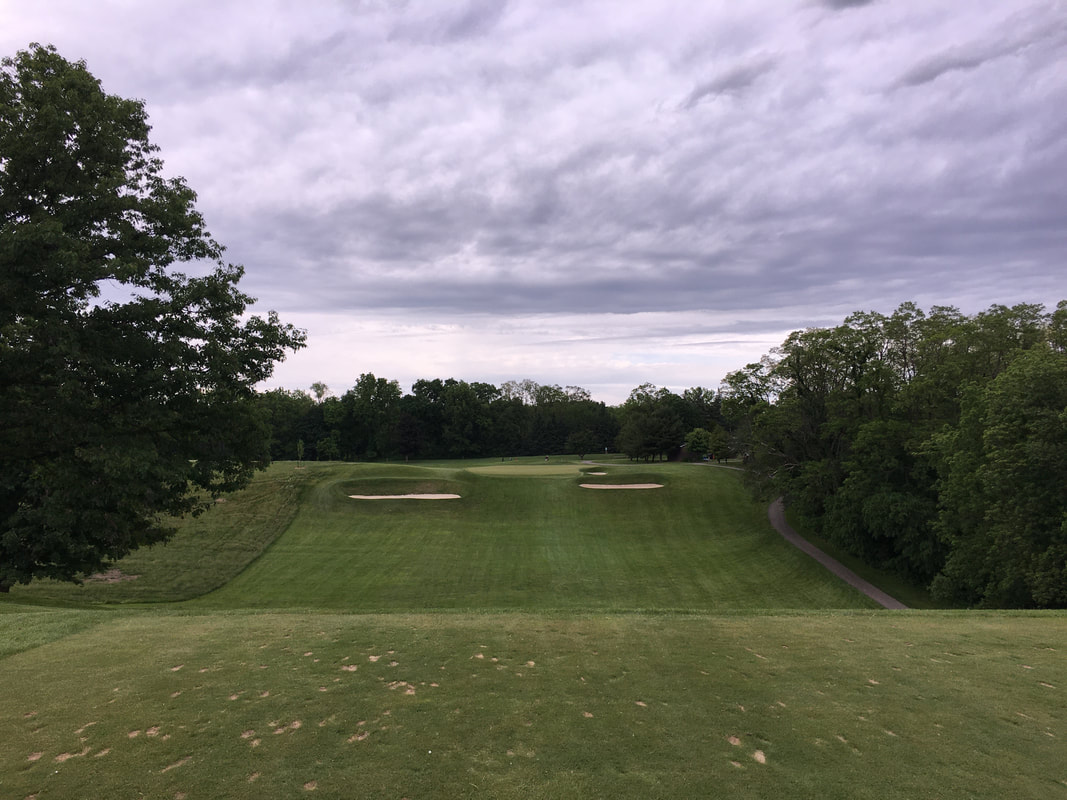
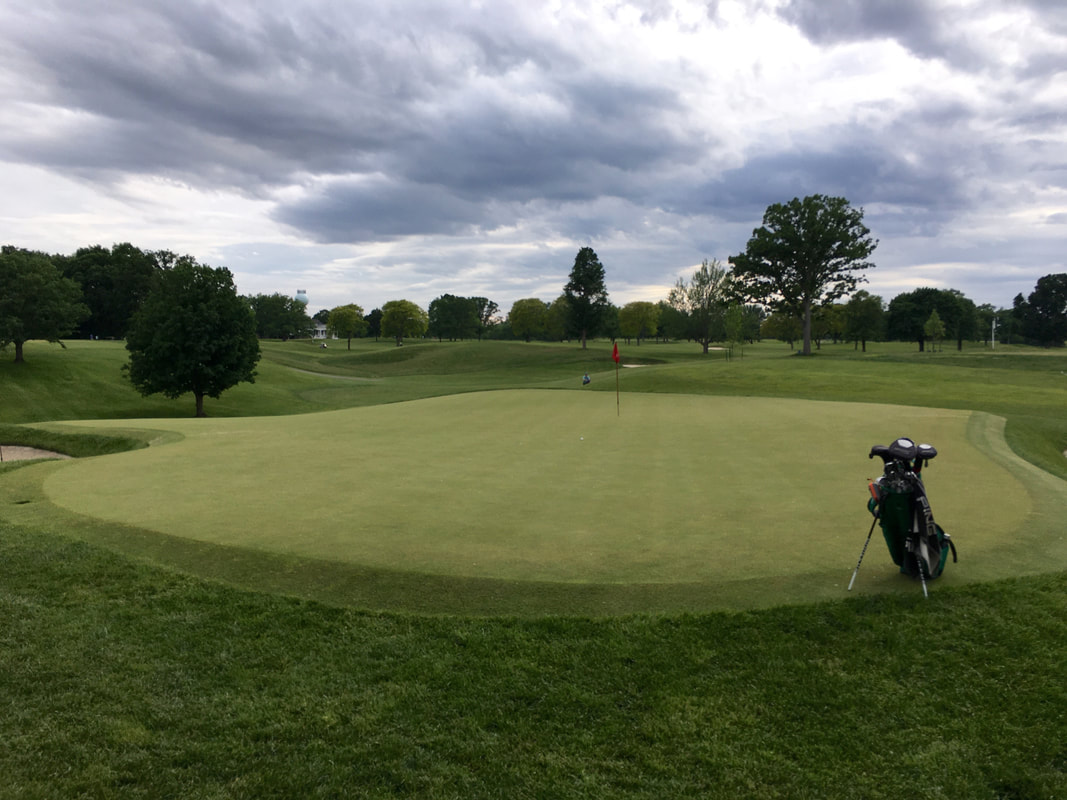
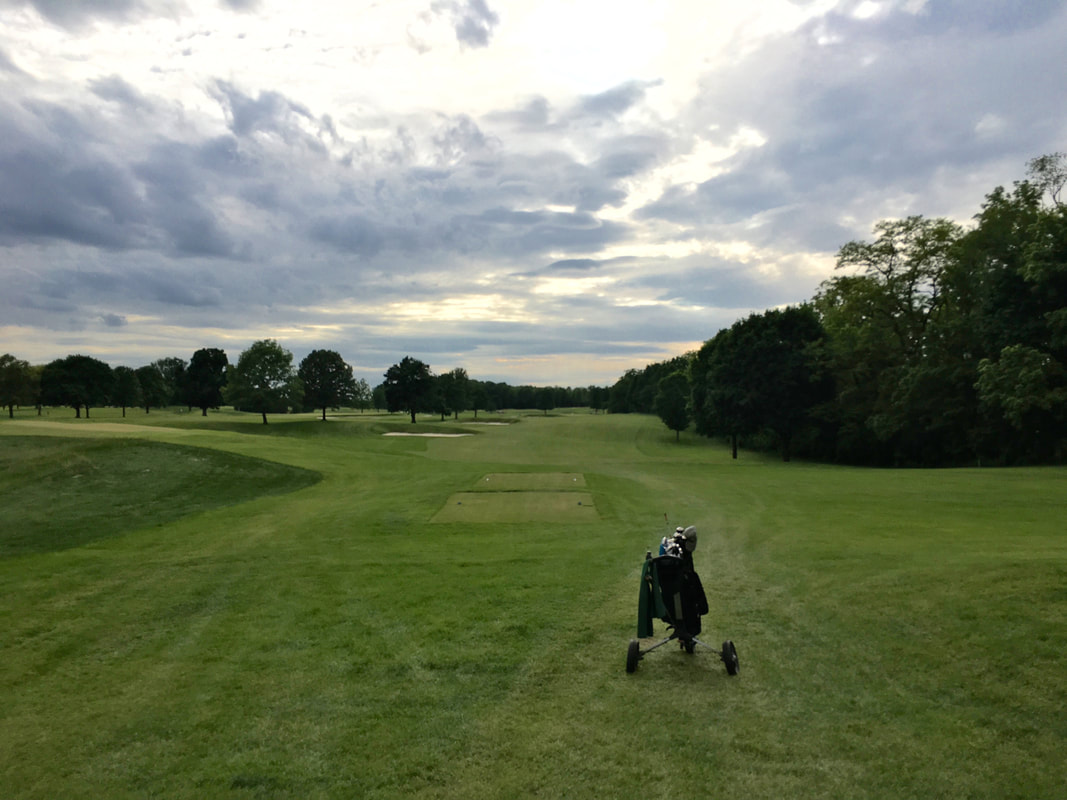
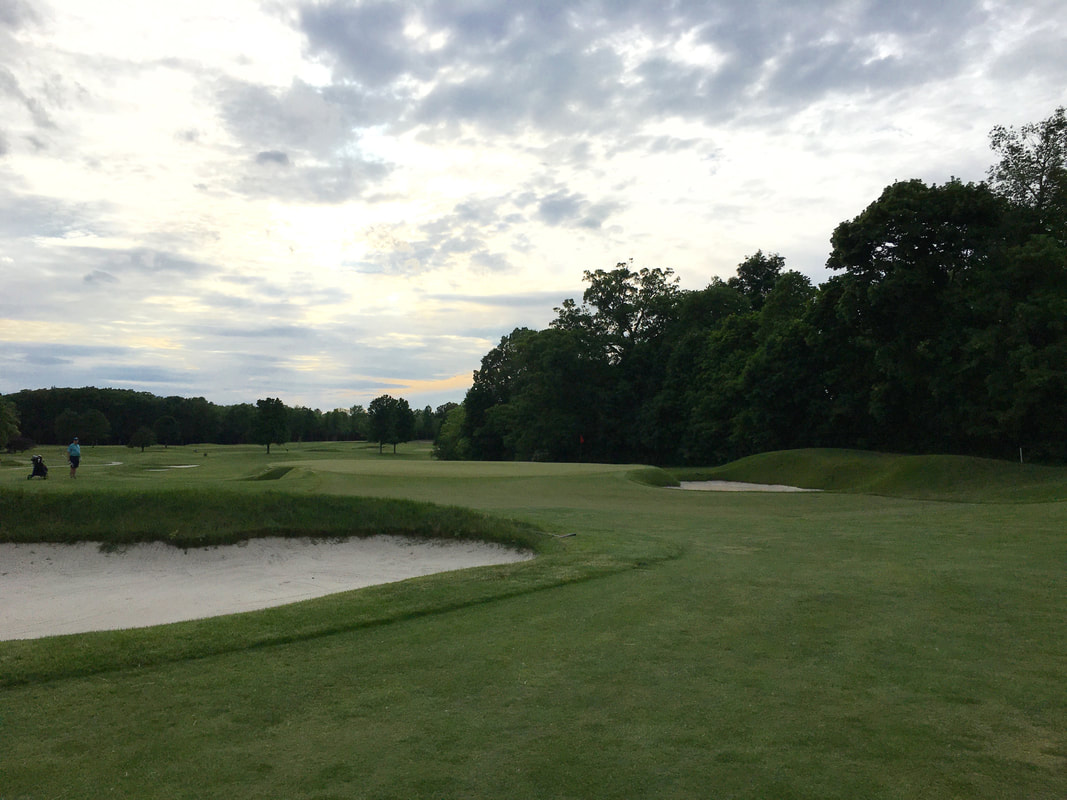
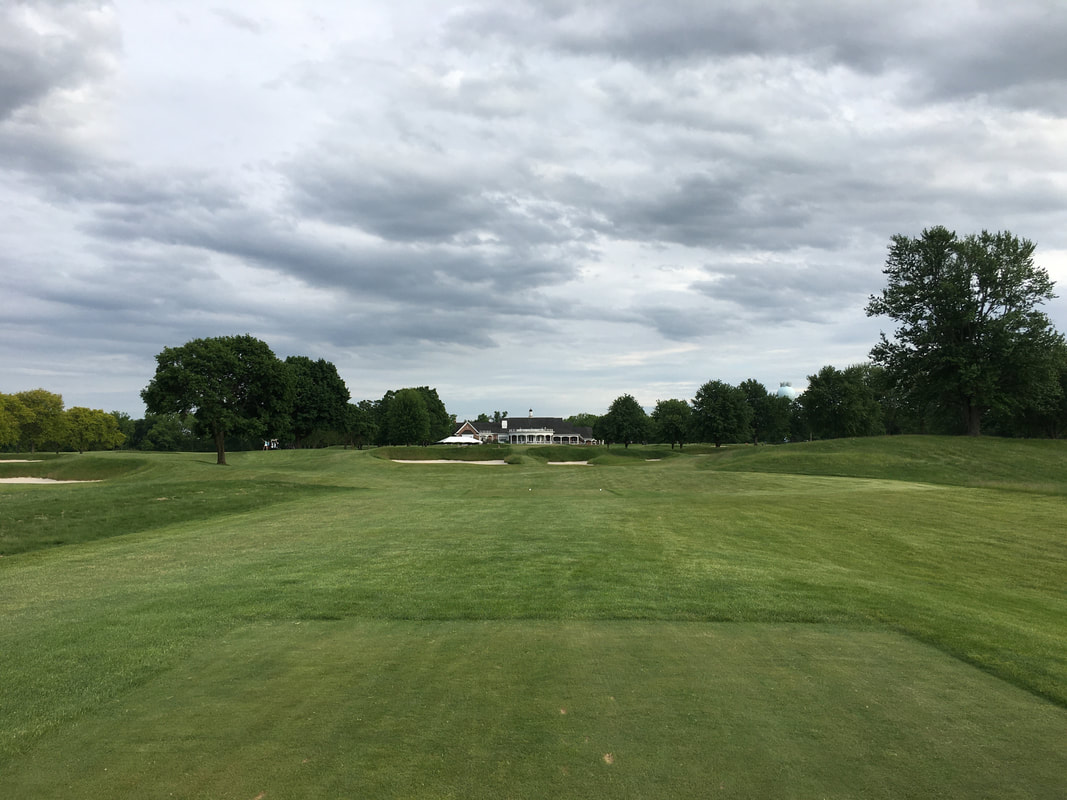
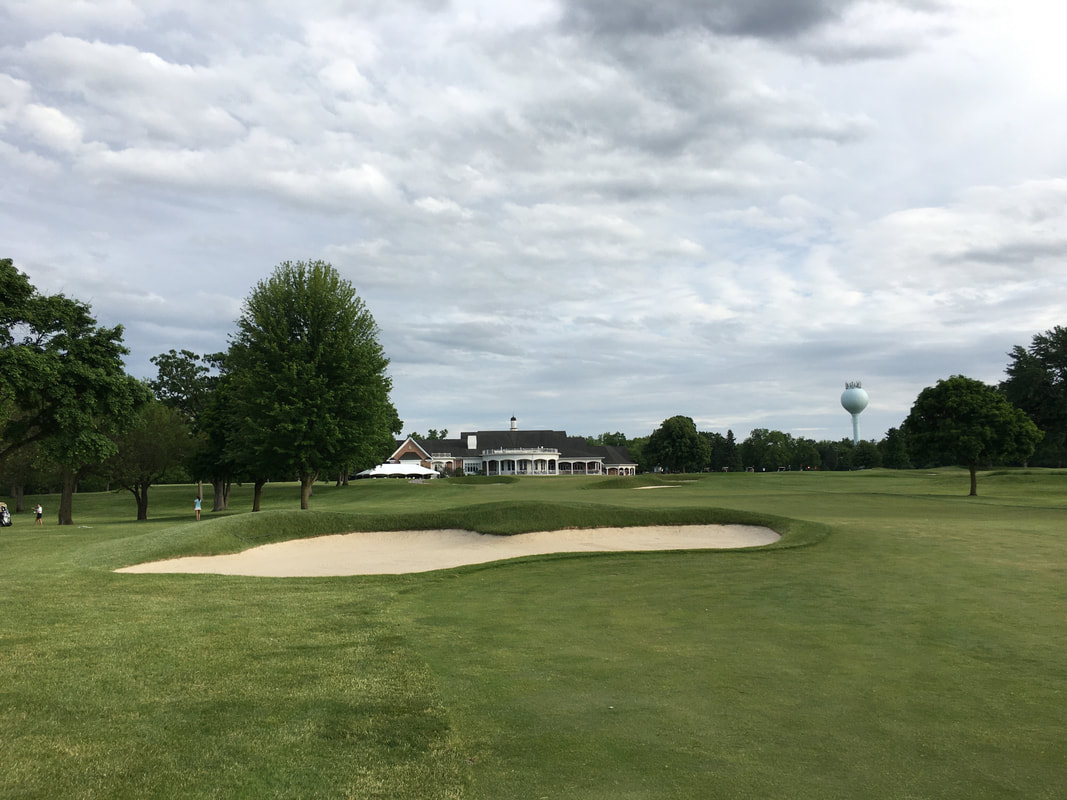
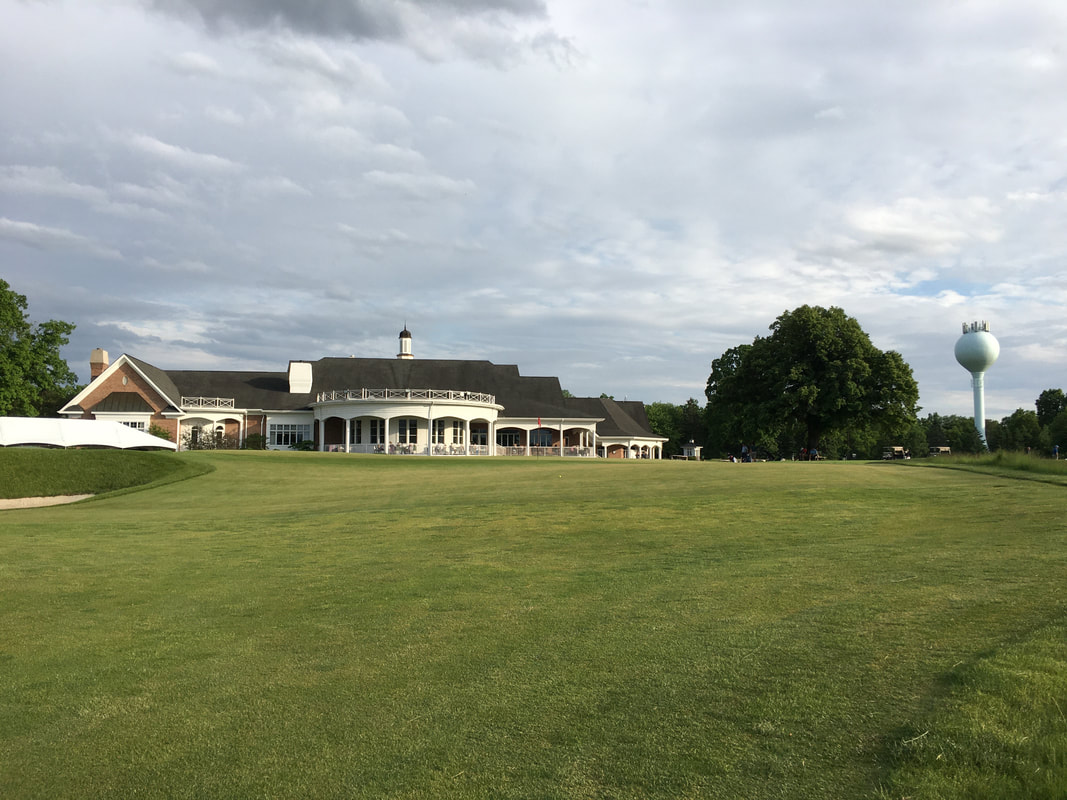
 RSS Feed
RSS Feed